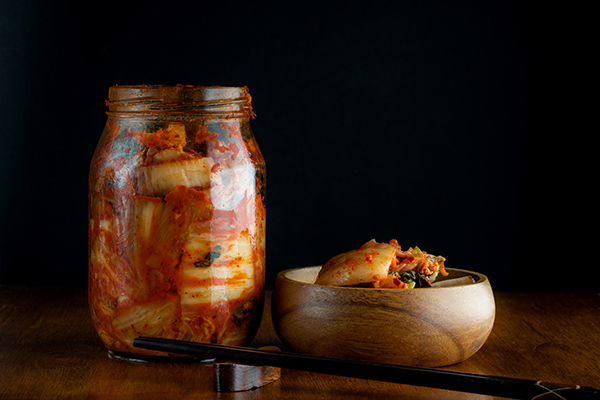
Food supply 101: 6 Prepper recipes to try before SHTF
Thursday, August 19, 2021 by Divina Ramirez
http://www.naturalnewsrecipes.com/2021-08-19-6-prepper-recipes-to-try-before-shtf.html

An important part of prepping for SHTF events is learning how to make nutritious foods that can help keep your energy levels up in a survival scenario. Ideally, those foods should also have a long shelf life.
If you’re looking to make such foods, check out the following recipes: (h/t to AskAPrepper.com)
Virginia ham
Virginia ham, also known as country ham, is a specialty ham well-known for its sweetness. It’s usually made from razorback hogs raised on a diet of peanuts and acorns.
When preparing this ham, you should first thoroughly cleanse the ham to remove any mold that formed during the curing and aging process. Knowing how to cure and preserve meat is a crucial skill to have in a survival scenario as it allows you to easily enjoy meat even if you don’t have or can’t make use of a refrigerator or freezer.
Here’s how to make Virginia ham:
Ingredients:
- 1 pork shoulder
- 1 pound salt
- 1 cup whiskey
Preparation:
- Place the pork in a large container. Cover it completely with salt.
- Refrigerate the pork for 30 days. You may need to add more salt until then to keep the pork covered.
- After 30 days, wipe the salt off of the pork before pouring the whiskey over it.
- Wrap the pork in a few layers of cheesecloth and secure it. Hang this for six months somewhere away from the sun and with decent airflow.
- Unwrap at the three-month mark to check how the pork is curing. You may need to cut off some mold. Wrap and cure it again for another three months. If left wrapped, it will last for about five years.
Kimchi
Kimchi is a traditional Korean dish made with fermented napa cabbage and radish. It is an excellent source of probiotics, which are live microorganisms that support digestive health. Traditionally, kimchi is stored in covered earthenware pots underground and allowed to ferment for several months.
Today, kimchi is often fermented for just a week before being stored in the refrigerator. Here’s how to make it:
Ingredients:
- 5 garlic cloves
- 1 head napa cabbage
- 1 thumb-sized piece of ginger
- 2 Tablespoons low-sodium soy sauce
- 1 Tablespoon Korean ground chili
- Salt
Preparation:
- Mince the garlic and ginger. Set aside.
- Remove the core of the cabbage and quarter it.
- Place the cabbage slices in a colander and salt them generously. Let sit overnight.
- Rinse the slices and place them in a bowl. Add the garlic, ginger, soy sauce and chili. Mix thoroughly.
- Portion the mix into sterilized mason jars. Lightly screw on the lid. Allow the mix to ferment for four days, preferably in a dark pantry.
- Store the jars in the refrigerator or bury them underground. They should last indefinitely.
Fruit leather
Fruit leather is a jerky-like product made by dehydrating fruits. The process reduces the fruit’s weight and removes moisture that would otherwise allow bacteria to proliferate, creating a tasty, shelf-stable snack. (Related: Food storage tips: How to dehydrate foods for long-term storage.)
You can make fruit leather using many fruits. Here’s how to make some using strawberries:
Ingredients:
- 4 cups strawberries
- 2 cups sugar
Preparation:
- Set your oven to 180 F or the lowest temperature. If using a dehydrator, set it to 130 F.
- Place the ingredients in a saucepan. Simmer until you can mash the fruit into a smooth puree.
- Pour the puree onto a baking sheet lined with parchment paper and spread it evenly.
- Dehydrate for about six to seven hours or until completely dry.
- Remove from the oven or dehydrator. Slice into strips. Fruit leather should last for up to four years.
Biltong
Biltong is a staple South African food made by drying meat that has been immersed in vinegar and spices. This classic food can be made using various types of meat as long as it’s lean. Like ham, it will also last for several years. Here’s how to make it:
Ingredients:
- 5 pounds lean meat
- 5 Tablespoons malt or cider vinegar
- 2 Tablespoons coriander seeds
- 3 teaspoons coarse salt
- 2 teaspoons ground black pepper
Preparation:
- Toast the coriander seeds, then grind them using a spice grinder or mortar and pestle.
- Slice the meat against the grain into one-inch pieces. Place in a container.
- Season the meat with the remaining ingredients. Refrigerate this for 12 to 24 hours.
- Remove the meat from the container. Place it on a plate and gently pat it dry. Be careful not to wipe off the spices.
- Hang the meat inside your fridge with some twine. You can also cover the meat with a cheesecloth and hang it outside if temperatures are low enough.
- Check the meat every few days. You want the entire piece of meat to feel hard. If it gives or feels mushy, then it hasn’t fully cured inside.
Peasant bread
Peasant bread is a hearty bread made with coarsely ground flour. It is typically served with soups or stews.
Ingredients:
- 2 packs dry yeast
- 4 cups coarse or whole-grain flour
- 2 cups warm water
- 2 teaspoons salt
- 2 teaspoons sugar
Preparation:
- Preheat the oven to 375 F.
- Mix all the dry ingredients in a large bowl. Add the warm water and mix thoroughly until a dough forms.
- Cover the bowl with a damp towel. Set aside for an hour to allow the dough to rise.
- Beat the dough with a spatula to deflate it, then place it in an oven-safe bowl or loaf pan.
- Allow the dough to rise to the rim of the container, then bake it for 20 minutes. This should last for three years.
Pilot crackers
Pilot crackers are a great vehicle for spreads and cured meats. You can find them in grocery stores, but you can also easily make them at home.
Ingredients:
- 2 cups flour
- 3/4 cup water
- 1 Tablespoon lard
- 1/2 teaspoon salt
Preparation:
- Preheat the oven to 400 F.
- Mix the ingredients in a bowl until a dough forms.
- Refrigerate the dough for 10 minutes to allow the lard to harden.
- Roll the dough until it’s about a quarter of an inch thick. Use a cookie cutter or a small cup to make the crackers. Place them on a baking sheet.
- Bake for 15 minutes. Let the crackers cool completely before removing them from the baking sheet.
Prepping for SHTF events also involves learning how to make nutritious foods to complement your emergency stockpile. Try any of the six recipes above to get started.
Go to NaturalNewsRecipes.com for more articles about healthy prepper recipes.
Sources include:
Tagged Under: Tags: biltong, disaster, emergency food, food supply, fruit leather, goodfood, homesteading, how-to, kimchi, off grid, peasant bread, pilot crackers, preparedness, prepper, prepping, recipes, SHTF, survival, survival food, Virginia ham
RECENT ARTICLES


Honey, powdered milk, salt and wheat: Survival cooking with the 4 basics of food storage

Natural healing: 12 Cold and flu home remedies
By Zoey Sky

Prepper recipes: How to make hardtack, a long-lasting survival food

Cooking after disaster strikes: 6 Baked bean recipes for preppers
By Zoey Sky
COPYRIGHT © 2017 NATURAL NEWS RECIPES


